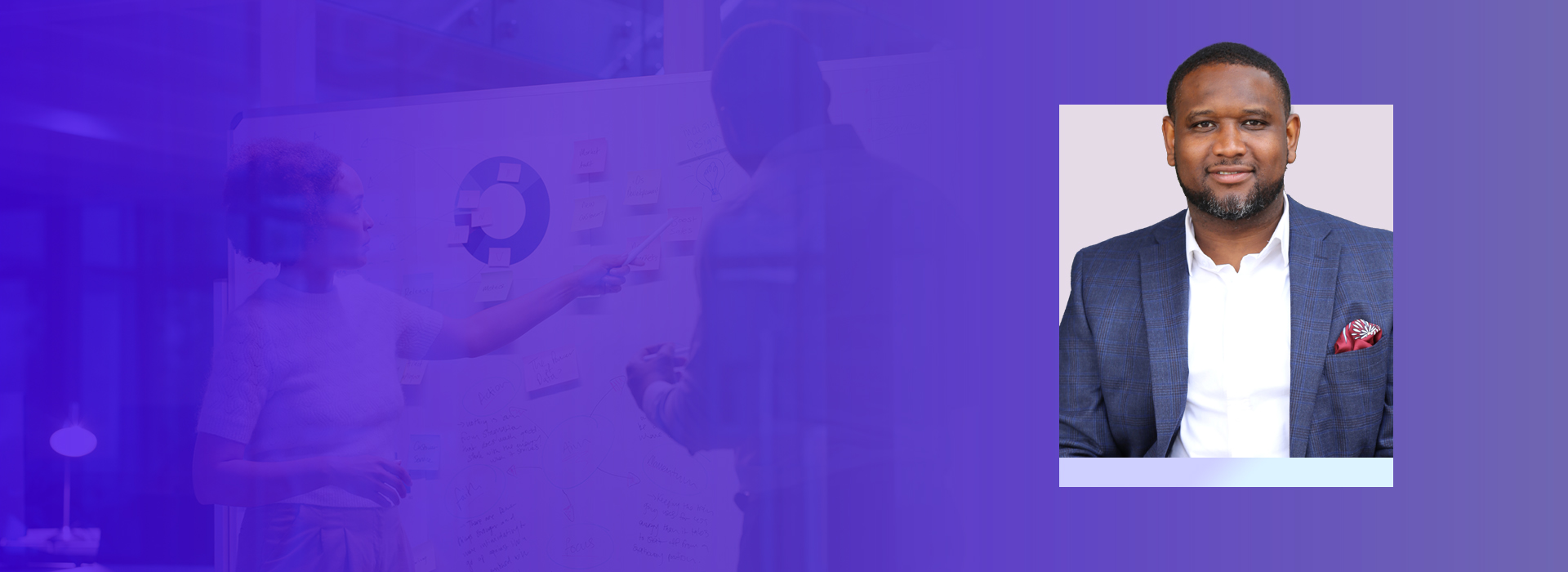Thrive When You Specialize

Positioning yourself and your services to clients is not a simple task—but through specialization, you can stand out from the competition and match yourself with clients who are in need of your specific services. With help from our new practice management workbook, you can gain key insights on the best methods to achieve this and more while growing your practice.
Increase your knowledge and take the steps to propel your business forward with this customizable workbook.
Ethics In Financial Services Insights
Unpacking Fairness in Insurance

Panelists included Lisa A. Schilling, FSA, EA, FCA, MAAA, Director of Practice Research, Society of Actuaries Research Institute and Peggy Tsai, Chief Data Officer, BigID. The session underscored the challenges posed by AI, emphasizing the importance of strong governance, transparency, and ongoing process enhancements to maintain fairness in data practices and ensure equitable outcomes in insurance.
Fairness in insurance products and processes has been a long-time hallmark of good management for successful insurance companies. Regulations require companies not be unfairly discriminatory to consumers in their processes and practices. This issue has come to the forefront in the industry recently amid advances in artificial intelligence (AI). Panelists underscored that AI and advanced analytics have heightened both the positive potential and negative implications of existing insurance practices. The discussion emphasized the need for a nuanced approach to fairness that addresses the complexities introduced by these technologies.
A pivotal theme was the significance of data quality and governance in ensuring fairness. Highlighting the inherent biases that can emerge during data collection, panelists stressed the ongoing recalibration and transparency necessary in model outputs to mitigate these biases effectively. Robust stewardship practices should prioritize data integrity before model building and decision-making. Ensuring accurate risk classification aligned with expected claims values can serve as a fundamental aspect of actuarial fairness.
The panel then examined the challenges posed by data proxies and synthetic data in insurance models. Synthetic data is data that is produced by machines, sometimes to represent human behaviors. Data proxies similarly involve analysis informed by machines processes to represent real-world behavior. Concerns were raised about the accuracy and representativeness of these proxies, particularly in reflecting real-world demographics. The difficulty of removing synthetic data once integrated into models underscored the importance of rigorous validation and transparency throughout the modeling process, including at the beginning of a development process. A critical aspect of the discussion addressed the use of proxies for race and ethnicity in insurance, highlighting the ethical and regulatory implications. Panelists stressed the necessity of rigorous data management and model validation processes to ensure compliance and fairness in risk assessment practices.
The discussion concluded with a consensus on the imperative for continuous monitoring, recalibration, and transparent communication in insurance practices. Balancing data-driven decision-making with fairness and objectivity remains a paramount challenge, requiring ongoing efforts to align technological advancements with ethical standards.
To learn more about AI in financial services, you can explore further with research from the Center for Ethics in Financial Services.
Financial Planning Philanthropic Planning Retirement Planning Insights
FinServe Ambassador Charts Career Evolution Through Specialization

Tudor says he entered the financial services profession via banking in 2008 during a volatile and chaotic time for the industry. Despite this, he says he found great satisfaction in his work in leadership roles – running several bank branches around Cincinnati, Ohio – and especially in areas involving lending. That was where he first started to sense the industry might have blind spots and think about how he wanted to address them.
“I really enjoyed helping people buy houses and start small businesses, but I saw gaps in knowledge and access, especially when it came to investment management,” he said. “The bank often had a minimum level of assets they would service, and I often saw more resources being afforded to affluent communities. I knew I wanted to focus on those who had been historically excluded.”
Tudor eventually transitioned into a role with Northwestern Mutual and spent several years at the company becoming a licensed advisor and directly working with clients. From those interactions, he continued to refine his sense of who he was as a professional and who he wanted to serve.
“Most people, especially those from historically excluded communities, need more education in and access to financial services and are looking for deeper advice than just receiving products,” he said. “I’ve always felt we should be building in systems to protect and educate these groups.”
In 2020, amid the COVID-19 pandemic, Tudor finally decided he wanted to start his own firm and launched Alchemist Wealth – with a focus on fee-only planning and serving women and other historically excluded communities – with his brother. Four years later, he merged the successful practice into Zenith Wealth Partners, where he continues to work as an advisor in a variety of planning fields, from investment portfolios to retirement and philanthropic planning. It’s all in service, he says, of his mission to help his clients align their money with their values.
The Role of Retirement Planning
While at Northwestern, Tudor availed himself of the company’s connection to The College to earn multiple designations and certifications: first through the CFP® Certification Education Program to get a strong financial planning foundation, and later through the Retirement Income Certified Professional® (RICP®) Program for the specialization he was seeking in retirement preparation and planning.
“The first time a client came to me and asked me questions about retirement I couldn’t answer, I knew I had to get more knowledge,” he said. “The RICP® is powerful because it impresses upon you that accumulation planning and retirement income planning are two very different things. When I was at Northwestern, we would answer questions about retirement planning with material from College thought leaders like Michael Finke, PhD, CFP® and Wade Pfau, PhD, CFA, RICP®. Their advice on using tools like annuities, home equity, and other income streams to stabilize retirement income may not be popular in some circles, but they’re mathematically proven to be better solutions.”
“[The RICP® Program]’s advice on using tools like annuities, home equity, and other income streams to stabilize retirement income may not be popular in some circles, but they’re mathematically proven to be better solutions.”
Tudor says thanks to the RICP®, he is now well-versed in retirement planning concepts and can simplify them enough for his clients to understand. He also says he sees a growing need for this specialized knowledge as America continues to age.
“The industry to me is still five to 10 years behind what’s necessary in retirement income planning, and it’s exciting to see The College continue to be out in front of the latest ideas and blaze the trail for doing things the right way,” he said.
Investing for Impact
In addition to his focus on retirement planning, Tudor says he’s always been interested in the technical side of planning and the potential of money in general to benefit society. Because of this, he enrolled in the Chartered Advisor in Philanthropy® (CAP®) Program at The College to gain more specific knowledge about how to use investment strategies to help his clients live their values.
“We often ask clients about their goals for impact: whether they’re broad or specific, for family, community, globally, or causes they support,” he said. “Clients constantly bring these subjects up, and I don’t know how I would be an advisor without being able to have those conversations. I believe eventually those kinds of conversations will be table stakes for the industry, and everyone will need to know how to talk about charitable giving with clients and organizations.”
While he loves working directly with clients, Tudor says it’s the institutional side of giving that he’s fallen in love with thanks to the CAP® Program.
“It’s about how you use money and make it work for what you believe in the real world, not just on your spreadsheet,” he said. “That kind of mission-aligned investing, where organizations use their capital to benefit society, is exactly where I want to be. The CAP® Program’s donor strategies were helpful, but its full course dedicated to working with nonprofits has allowed me to sit on board committees and lead conversations about aligning investment portfolios with an organization’s mission. I think that’s a serious gap in the market to be addressed.”
“[The CAP® Program] has allowed me to sit on board committees and lead conversations about aligning investment portfolios with an organization’s mission. I think that’s a serious gap in the market to be addressed.”
Finding Community and Purpose
After being inaugurated into The College community as a recipient of the NextGen Financial Services Professional Award, Tudor says he has been consistently impressed by what The College is able to do for financial professionals – especially in its events like the annual Conference of African American Financial Professionals (CAAFP).
“CAAFP feels like a homecoming every year for me,” he said. “It’s my one opportunity to see and reconnect with a lot of people I know from the industry, and the workshop and keynote sessions are consistently incredible. It’s a safe bet for me to invite a new advisor to CAAFP. There aren’t many places Black professionals in financial services can go and see mostly people who look like them, and the level of excellence in the execution of the event is always impressive.”
“It’s a safe bet for me to invite a new advisor to CAAFP. There aren’t many places Black professionals in financial services can go and see mostly people who look like them.”
Tudor says he’ll be present at this year’s CAAFP, to be held August 12-14 in Atlanta, Georgia. In the meantime, he advises young professionals in the field to be open to challenging themselves and thinking intentionally about their career path.
“Go to places that stretch you and be mindful of how you feel when you’re doing things,” he said. “This field affords you 40 years to build a career and have an impact, so thinking long-term is key. I love working with personal clients and enjoy financial planning in general, but I really live for doing organizational and institutional planning. Fill your day with things you enjoy doing, and success will come.”
Ethics In Financial Services Insights
Insights and Highlights Self-Regulatory Approaches to AI Governance

The panelists emphasized that good model development practices, irrespective of regulatory requirements, lead to better performance and predictability in tech investments. Companies implementing self-governance ahead of regulations often perform better by integrating risk management with economic considerations. The NIST framework, “Towards a Standard for Identifying and Managing Bias in Artificial Intelligence,” addresses both technical and social impacts of AI, ensuring comprehensive governance.
Mandated by Congress in 2021, NIST developed a risk-based framework for managing AI models and practices. This flexible resource aids organizations in governing, mapping, measuring, and managing bias in AI. By focusing on governance, policies, procedures, and organizational culture, organizations can take a comprehensive approach to this challenge. By taking a proactive approach to governance, the aim is to help organizations promote trustworthy AI practices, including model validity, reliability, security, resilience, explainability, accountability, transparency, privacy, fairness, and bias mitigation.
The panel also discussed the relationship between federal and state initiatives and the role of self-regulation in AI governance. One panelist mentioned the AI Executive Order's contribution to defining real risks and the ongoing work on an AI risk management profile for generative AI. Another stressed the need for clear documentation and repeatable practices to provide assurance to partners.
The conversation also covered the challenges of accountability within organizations, highlighting the need for a cultural shift towards responsible AI use. The panel emphasized the importance of integrating AI risk management with broader enterprise risk management frameworks and adopting a shared responsibility model with third-party vendors.
Looking forward, one panelist predicted that AI risk management would become a distinct job category, with an increased focus on the societal impacts of AI. Another anticipated a progressive impact on software quality control driven by AI, leading to more regulated software development practices.
In summary, the panel highlighted that given the evolving regulatory landscape there is a need for clear and transparent AI governance practices, as well as the importance of interdisciplinary collaboration and cultural shifts towards responsible AI use.
To learn more about AI in financial services, you can explore further with research from the Center for Ethics in Financial Services.
Marketing to Your Ideal Client

Growing your business is no easy task—but we can help! Our new practice management workbook is here to instruct you on the crucial methods every advisor needs to know as they seek to grow their practice.
Learn more about determining what your ideal client looks like and the services you offer them that set you apart from the competition. Prioritizing your client relationships not only helps you position yourself to provide your client with the best advice possible, but it will also keep your clients satisfied.
Increase your knowledge and take the steps to propel your business forward with this customizable workbook.
Domarina Oshana Discusses the Ethics of AI in Financial Services
In her piece, Oshana, director of research and operations at the American College Center for Ethics in Financial Services, recounts her recent experience at the twenty-third Annual James A. and Linda R. Mitchell/The American College of Financial Services Forum on Ethical Leadership in Financial Services. She specifically shares the insights she gained relating to AI and its use in the financial services industry.
Oshana goes on to discuss the major ethical implications that all businesses should consider when implementing AI into their strategy, including how to approach criticism of AI, the risks associated, and the importance of effective governance.
Read on to hear what Oshana has to say about this trending topic!
Diversity, Equity & Inclusion Insights
Military Support Groups

In 2004, Troopathon, formerly known as Move America Forward, was founded by Melanie Morgan as a nonprofit organization with a mission to provide emotional and tangible support to active-duty troops as well as offer assistance and resources to military families and veterans in need. Since its founding, Troopathon has sent over 1,000 tons of care packages to troops on the frontline thanks to the unwavering support of thousands of pro-troop civilians, veterans, and military families nationwide.1
The organization hosts an annual Troopathon fundraiser, which is the largest and only nationally televised annual care package telethon. It aims to send as many military care packages as possible to our troops on the front lines.
Troopathon provides numerous opportunities to get involved including donating, volunteering, and spreading awareness.
Diversity, Equity & Inclusion Insights
Generation Z Employment Insights Survey

With months of dedicated research and design, Wright Research Fellow Alisha Cook and director of research Kaylee Ranck, PhD, have developed a strong foundation for understanding the career interests and intricacies of the next and upcoming generation of financial professionals, Generation Z. As the financial services industry evolves, understanding and harnessing the potential of these emerging professionals becomes paramount for the future success of institutions and the clients they serve.
The survey aims to understand the career interests, experiences, and preferences of Gen Z individuals (aged 18-27), who are either interested in or already within their first three years of a career within the financial services industry. It covers a range of critical topics including but not limited to:
Career interests and experiences
Perceptions of the financial services industry
Financial literacy, digital skills and AI adaptiveness
Career advancement goals and aspirations
Consisting of over 40 questions and around 15 minutes in length, the survey dives deep into the minds of Gen Z, capturing the nuances of their career motivations and expectations. Participants' involvement will have no foreseeable risks and responses will remain anonymous, ensuring their safety and confidentiality.
By participating in this survey, Gen Z professionals will provide critical insights that can help shape the future of the financial services industry. These insights will empower institutions to tailor their recruitment and retention strategies more effectively, aligning them with the expectations and needs of young professionals.
We invite all eligible Gen Z individuals to share their perspectives and contribute to this important research. This survey will provide valuable data that can help shape the future of financial services, ensuring that it remains responsive to the next generation of talent. To participate, simply click the link below:
https://theamericancollege.qualtrics.com/jfe/form/SV_d4IBCrNvFQvXefA

Diversity, Equity & Inclusion Insights
Women Working in Wealth on the Road for Women's History Month

The InvestmentNews Women Advisor Summit provided a unique platform for advisors and their supporters to explore the latest industry trends, practice management strategies, and career development opportunities. The American College of Financial Services, serving as the education partner, was proud to contribute its expertise to this talented group of financial professionals.
Returning from the summit, attendees, including myself, felt inspired and equipped with practical ideas, new tools, and invaluable connections with peers and industry leaders. Some of the key lessons that resonated with me included the following:
- The practice of a financial professional is to become a translator and speak the language of your clients
- Spend the time getting to know your clients during all seasons of life and put in the reps to develop a rapport with clients
- Organic growth aside from M&A takes concentrated effort
At the Wealth Management EDGE conference, discussions centered on the future of diversity, equity, inclusion, and belonging (DEIB) in the industry. Representing The College, I had the privilege to discuss how the industry can increase awareness and accessibility for diverse communities. Addressing the obstacles that hinder entry into the financial services industry and ensuring firms retain and invest in diverse talent is crucial.
As the financial services industry continues to evolve, embracing diversity and fostering an inclusive environment will be key to its sustainability and success. By engaging with passion and committing to DEIB principles, the industry can ensure a bright and equitable future for all professionals and clients. Read more about the discussion here.
Diversity, Equity & Inclusion Insights
Military Resource Group Consortium’s First Quarterly Webinar

On June 6, the Center for Military and Veterans Affairs’ Military Resource Group Consortium hosted its first free hour-long webinar featuring panelists from various tribes in the financial services industry. The webinar began with each panelist describing their transition from the military into the industry and highlighting the opportunities and challenges they each experienced. They continued by discussing the educational opportunities they each took advantage of and how it has led to their success in the industry.
Each panelist delved into which hard and soft skills learned in the military they believe are most transferable to the industry. “In the military you learn how rules and regulations work and how to apply and live by them, but you also learn humility which will come when helping clients navigating life,” said Daniel Kopp of Wise Stewardship Financial Planning.
Matt Stephens of Willow Chute Financial also felt that the military provided him with valuable skills that he has transferred to financial services. “You learn how to ask pointed specific questions and network well, which strengthens your influence,” Stephens said.
Christopher Smiley stated his belief that the regimented environment prepared him for success in financial services as well, “In the military you are always used to having a manual that helps you build efficiency; you can build efficiency and discipline into financial practices.”
In total, the webinar had 57 registrants with many scholars from the Center for Military and Veterans Affairs and members from each consortium’s company resource group in attendance.
The consortium will be hosting its next webinar during the 2024 Military Summit.